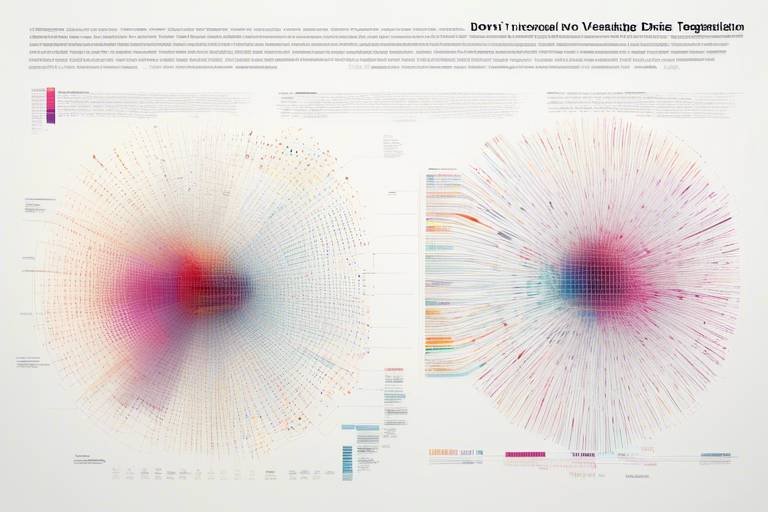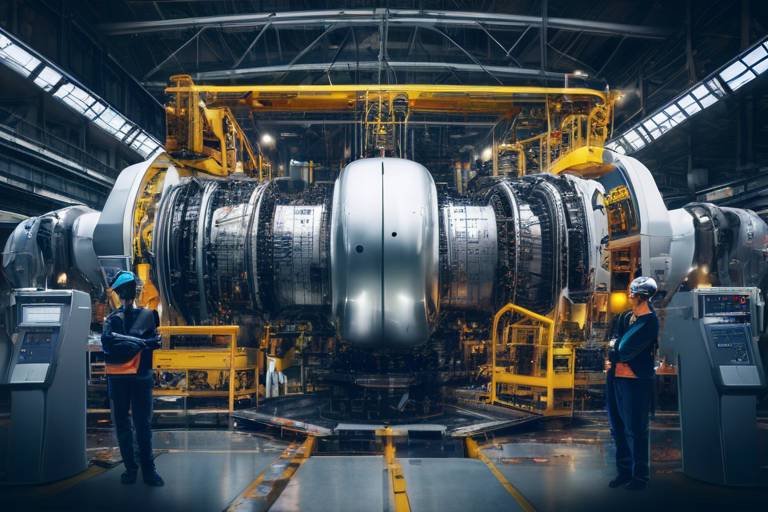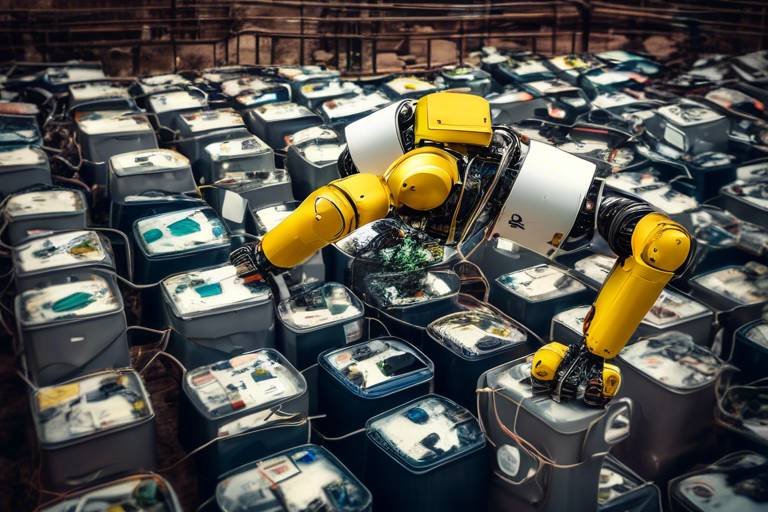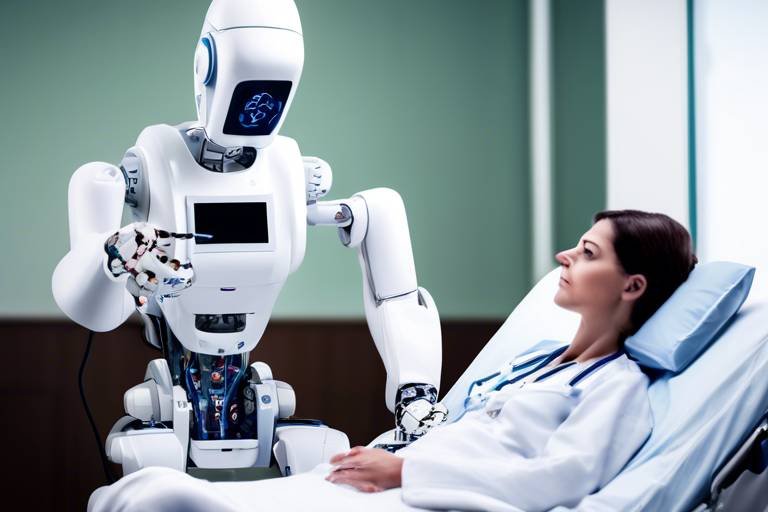Innovations in Data Visualization Technologies
In today's fast-paced digital world, the way we interpret data has undergone a dramatic transformation. With the explosion of information available at our fingertips, the need for effective data visualization technologies has never been more critical. These innovations are not just about making data pretty; they are about enhancing our ability to make informed decisions swiftly and accurately. Imagine walking into a room filled with complex charts and graphs, and instead of feeling overwhelmed, you find yourself effortlessly navigating through the insights they present. This is the power of modern data visualization technologies, which are designed to simplify the complex and illuminate the obscure.
As we delve deeper into this topic, we'll explore how advancements in real-time data visualization, the integration of artificial intelligence (AI) and machine learning (ML), the rise of cloud-based solutions, and the exciting realms of augmented reality (AR) and virtual reality (VR) are reshaping the landscape of data analysis across various industries. Each of these innovations plays a crucial role in helping organizations make sense of their data and leverage it for strategic growth.
Moreover, the importance of user interaction cannot be understated. Today’s visualization tools are not just static displays; they are dynamic interfaces that allow users to engage with data in real-time, fostering a deeper understanding and encouraging exploration. This article will highlight how these innovations are not only enhancing data interpretation but also redefining decision-making processes in ways we could only dream of a decade ago.
So, buckle up as we embark on this journey through the cutting-edge innovations in data visualization technologies. Whether you're a data analyst, a business executive, or simply a curious mind, there's something in this exploration that will resonate with you. Let's uncover the future of data visualization together!

Emergence of Real-Time Data Visualization
The digital landscape is evolving at an unprecedented pace, and with it, the need for real-time data visualization has emerged as a game-changer for organizations across various sectors. Imagine being able to monitor your business metrics as they happen, not just at the end of the day or week. This capability allows companies to respond to trends and anomalies immediately, transforming their operational strategies. Real-time data visualization tools are not just a luxury; they are becoming a necessity in today's fast-paced world.
These tools enable organizations to visualize data streams in real time, offering a dynamic perspective that static reports simply cannot provide. For instance, consider a retail company that tracks customer behavior on its website. With real-time data visualization, they can see which products are trending, how long customers are spending on certain pages, and even where they are dropping off in the purchasing process. This immediate feedback loop allows for quick adjustments to marketing strategies and stock levels, ultimately leading to increased sales and customer satisfaction.
Furthermore, real-time data visualization is crucial in industries like healthcare, where timely decisions can mean the difference between life and death. Hospitals are increasingly utilizing these tools to monitor patient vitals, track the spread of diseases, and manage resources efficiently. By visualizing this data in real time, healthcare professionals can make informed decisions swiftly, improving patient outcomes.
But how does this technology work? At its core, real-time data visualization relies on advanced data processing technologies that can handle large volumes of data as they are generated. This often involves the integration of streaming data platforms and data warehouses that can process and analyze data on the fly. The results are then displayed through interactive dashboards that provide a clear, intuitive view of complex datasets. The following table illustrates some key components involved in real-time data visualization:
| Component | Description |
|---|---|
| Data Sources | Various inputs such as IoT devices, web applications, and databases that generate data. |
| Data Processing | Techniques and tools that process data in real time, such as Apache Kafka or Apache Storm. |
| Visualization Tools | Software that converts processed data into visual formats, like Tableau or Power BI. |
| Dashboards | Interactive interfaces that display visualized data, allowing users to explore insights. |
Organizations leveraging real-time data visualization not only enhance their decision-making capabilities but also foster a culture of data-driven insights. Employees at all levels can access and interpret data relevant to their roles, breaking down silos and encouraging collaboration. This democratization of data empowers teams to innovate and pivot strategies based on real-time feedback, ultimately leading to a more agile business environment.
In conclusion, the emergence of real-time data visualization is reshaping how organizations operate. The ability to visualize data as it happens provides a competitive edge, enabling quicker responses to market changes and customer needs. As technology continues to advance, we can only expect this trend to grow, further embedding real-time data visualization into the fabric of decision-making processes across industries.
- What is real-time data visualization? Real-time data visualization refers to the ability to visualize data as it is generated, allowing organizations to monitor metrics and trends instantly.
- How does real-time data visualization benefit businesses? It enables quicker decision-making, enhances operational efficiency, and improves customer satisfaction by allowing businesses to respond to trends immediately.
- What technologies are used in real-time data visualization? Technologies include streaming data platforms, data processing tools, and visualization software like Tableau or Power BI.

Integration of AI and Machine Learning
In today's fast-paced digital landscape, the integration of Artificial Intelligence (AI) and Machine Learning (ML) into data visualization technologies is nothing short of revolutionary. These advancements are not just enhancing the way we look at data; they are fundamentally changing the game for decision-makers across various sectors. Imagine having a tool that not only presents data but also interprets it for you in real time—sounds like something out of a sci-fi movie, right? Well, it's happening now!
AI and ML algorithms analyze vast amounts of data at lightning speed, providing automated insights that can significantly improve the decision-making process. Instead of spending hours sifting through spreadsheets, users can now receive actionable recommendations almost instantly. This is like having a personal assistant who knows your business inside and out, ready to provide you with the information you need at the drop of a hat.
One of the standout features of integrating AI and ML into data visualization is the capability for automated data insights. This technology takes the grunt work out of data analysis, allowing users to focus on what really matters: interpreting results and making informed decisions. For instance, AI tools can automatically detect anomalies in data sets, flagging these outliers for further investigation. This means that businesses can respond to potential issues before they escalate, enhancing their agility and resilience in a competitive market.
Another exciting development is the use of Natural Language Processing (NLP), which is making data visualization more accessible than ever. With NLP, users can query data using everyday language. Imagine asking your data visualization tool, "What were our sales figures last quarter?" and receiving a clear, visual representation of that data in seconds. This capability demystifies complex analysis tasks, allowing even those without a technical background to engage meaningfully with data.
Moreover, the integration of AI and ML facilitates predictive analytics visualization. This powerful feature enables businesses to anticipate future trends by representing complex data patterns through intuitive graphics and dashboards. For example, a retail company can analyze past purchasing behaviors to forecast future sales, thus optimizing inventory and marketing strategies. This forward-thinking approach is akin to having a crystal ball that helps you navigate the uncertainties of the market.
In summary, the integration of AI and Machine Learning into data visualization is not just a trend; it's a paradigm shift that empowers organizations to make smarter, faster decisions. With automated insights, natural language processing, and predictive analytics, businesses can now harness the full potential of their data, transforming it from a static resource into a dynamic asset that drives growth and innovation.
- What is the role of AI in data visualization? AI enhances data visualization by providing automated insights, predictive analytics, and natural language processing, making data interpretation easier and more efficient.
- How does machine learning improve decision-making? Machine learning analyzes large data sets quickly, allowing organizations to identify trends and anomalies, which helps in making informed decisions swiftly.
- Can non-technical users benefit from advanced data visualization tools? Absolutely! With features like natural language processing, even those without a technical background can query and analyze data easily.

Automated Data Insights
In today's fast-paced world, businesses are inundated with data from countless sources. The challenge lies not just in collecting this data, but in making sense of it quickly and effectively. This is where come into play. Imagine having a personal assistant who sifts through mountains of data, identifies key trends, and presents them in a digestible format—all while you focus on strategic decision-making. Sounds like a dream, right? Well, it's becoming a reality!
Automated data insights utilize sophisticated algorithms and machine learning techniques to analyze data sets without requiring constant human intervention. This technology can process vast amounts of information in mere moments, delivering actionable insights that can drive business strategies. For instance, instead of spending hours generating reports, stakeholders can receive real-time updates on performance metrics, customer behavior, and market trends. This not only saves time but also enhances accuracy, as automated systems are less prone to human error.
Moreover, the integration of automated insights allows organizations to be more proactive rather than reactive. By identifying patterns and anomalies in data, businesses can anticipate market shifts, optimize operations, and improve customer experiences. For example, a retail company can leverage automated insights to track inventory levels and customer purchasing trends, enabling them to adjust stock levels in real-time and avoid overstocking or stockouts.
To illustrate the impact of automated data insights, consider the following table that highlights key benefits:
| Benefit | Description |
|---|---|
| Time Efficiency | Reduces the time spent on data analysis, allowing teams to focus on strategic initiatives. |
| Improved Accuracy | Minimizes human error and provides consistent results through automated processes. |
| Proactive Decision-Making | Enables businesses to anticipate changes and adjust strategies accordingly. |
| Customizable Dashboards | Provides tailored visualizations that meet the specific needs of different stakeholders. |
Furthermore, automated data insights are not just about speed and efficiency; they also enhance the user experience. By presenting data visually through intuitive dashboards, users can quickly grasp complex information and make informed decisions. Imagine a sales team accessing a dashboard that highlights their performance metrics in real-time, allowing them to adjust their strategies on the fly. This level of visibility can be a game-changer in competitive markets.
In conclusion, automated data insights represent a significant leap forward in how organizations handle data. By leveraging these technologies, businesses can unlock the full potential of their data, leading to smarter decisions and better outcomes. As we continue to innovate and refine these tools, the future of data analysis looks brighter than ever.
- What are automated data insights?
Automated data insights are insights generated through advanced algorithms and machine learning, which analyze data sets without the need for constant human oversight. - How do automated insights improve decision-making?
They provide real-time data analysis, allowing organizations to make informed decisions quickly based on the latest trends and patterns. - Can automated data insights work with any industry?
Yes, they can be applied across various industries, including retail, finance, healthcare, and more, adapting to specific data needs and goals.

Natural Language Processing
Natural Language Processing (NLP) is rapidly transforming the landscape of data visualization, making it more accessible than ever before. Imagine being able to ask a computer a question about your data, just like you would ask a friend, and receiving a clear, insightful answer almost instantly. This is the power of NLP in action. By leveraging sophisticated algorithms and linguistic models, NLP enables users to interact with data using everyday language, eliminating the need for complex coding or technical jargon. This democratization of data analysis is particularly beneficial for organizations that may not have a dedicated data science team.
One of the most exciting aspects of NLP in data visualization is its ability to streamline the analysis process. Users can simply type or speak their queries, and the system interprets these inputs to generate relevant visualizations or reports. For example, instead of sifting through endless spreadsheets, a user could ask, "What are the sales trends for the last quarter?" and receive an intuitive graph that highlights key insights. This not only saves time but also enhances decision-making capabilities by providing immediate access to critical information.
Moreover, NLP can identify patterns and relationships within data that might not be immediately obvious. By analyzing user queries, NLP systems can uncover trends and anomalies, allowing businesses to make proactive decisions. For instance, if a retail manager frequently queries about stock levels and sales performance, the system can learn from these interactions and suggest optimal inventory levels based on historical data and seasonal trends. This level of personalization and responsiveness is a game-changer in the world of data visualization.
To illustrate the impact of NLP on data visualization, consider the following table that showcases different NLP applications in data analysis:
| Application | Description | Benefits |
|---|---|---|
| Query-Based Visualization | Users can ask questions in natural language. | Increased accessibility and quicker insights. |
| Sentiment Analysis | Analyzing customer feedback and reviews. | Understanding customer sentiment and improving products. |
| Data Summarization | Generating summaries from large datasets. | Simplified understanding of complex data. |
As NLP technology continues to evolve, we can expect even more sophisticated applications in data visualization. The ability to communicate with data in a natural, intuitive way not only enhances user experience but also empowers organizations to make data-driven decisions more effectively. In a world where data is king, harnessing the power of NLP could very well be the key to unlocking its full potential.

Predictive Analytics Visualization
Imagine having a crystal ball that not only shows you the future but also helps you make informed decisions based on complex data patterns. does just that, transforming how businesses anticipate trends and strategize for the future. By utilizing sophisticated algorithms and data modeling techniques, this technology enables organizations to visualize potential outcomes and scenarios, allowing them to act proactively rather than reactively.
At its core, predictive analytics visualization involves the representation of data through intuitive graphics and dashboards that simplify the understanding of intricate data relationships. For instance, a retail company can use predictive models to forecast sales for the upcoming season. By visualizing historical sales data alongside various influencing factors—like marketing campaigns, economic conditions, and consumer behavior—they can create a more accurate picture of what to expect. This not only aids in inventory management but also enhances marketing strategies, ensuring that resources are allocated efficiently.
One of the most compelling aspects of predictive analytics visualization is its ability to present data in a way that is easily digestible. Complex algorithms and statistical models can be daunting, but when these insights are visualized through charts, graphs, and other engaging formats, the information becomes accessible to a broader audience. This democratization of data empowers decision-makers at all levels to understand the implications of their choices without needing a PhD in data science.
Moreover, predictive analytics visualization often incorporates real-time data feeds, allowing organizations to adjust their strategies on the fly. For example, a financial services firm could visualize stock market trends in real-time, using predictive analytics to identify potential investment opportunities or risks. By combining historical data with real-time insights, companies can develop a comprehensive view that enhances their agility in a fast-paced market.
To illustrate the impact of predictive analytics visualization, consider the following table that outlines its benefits across different sectors:
| Industry | Benefits of Predictive Analytics Visualization |
|---|---|
| Healthcare | Improved patient outcomes through predictive modeling of disease outbreaks and treatment effectiveness. |
| Finance | Enhanced risk assessment and investment strategies by forecasting market trends. |
| Retail | Optimized inventory management and personalized marketing efforts based on consumer behavior predictions. |
| Manufacturing | Increased efficiency through predictive maintenance and supply chain optimization. |
In conclusion, predictive analytics visualization is more than just a technological advancement; it is a game-changer for businesses striving to stay ahead in a competitive landscape. By transforming raw data into actionable insights, organizations can make better decisions, anticipate challenges, and seize opportunities before they even arise. The future of decision-making is here, and it’s beautifully visualized.
- What is predictive analytics visualization?
Predictive analytics visualization is a method of displaying data insights and forecasts through visual formats, making it easier for users to understand complex data relationships and anticipate future trends. - How does predictive analytics help businesses?
It allows businesses to make informed decisions by forecasting potential outcomes, optimizing resource allocation, and enhancing strategic planning. - Can predictive analytics be used in real-time?
Yes, many predictive analytics tools incorporate real-time data feeds, enabling organizations to adjust their strategies based on the latest information. - What industries benefit from predictive analytics visualization?
Industries such as healthcare, finance, retail, and manufacturing can significantly benefit from predictive analytics visualization through improved decision-making and operational efficiency.
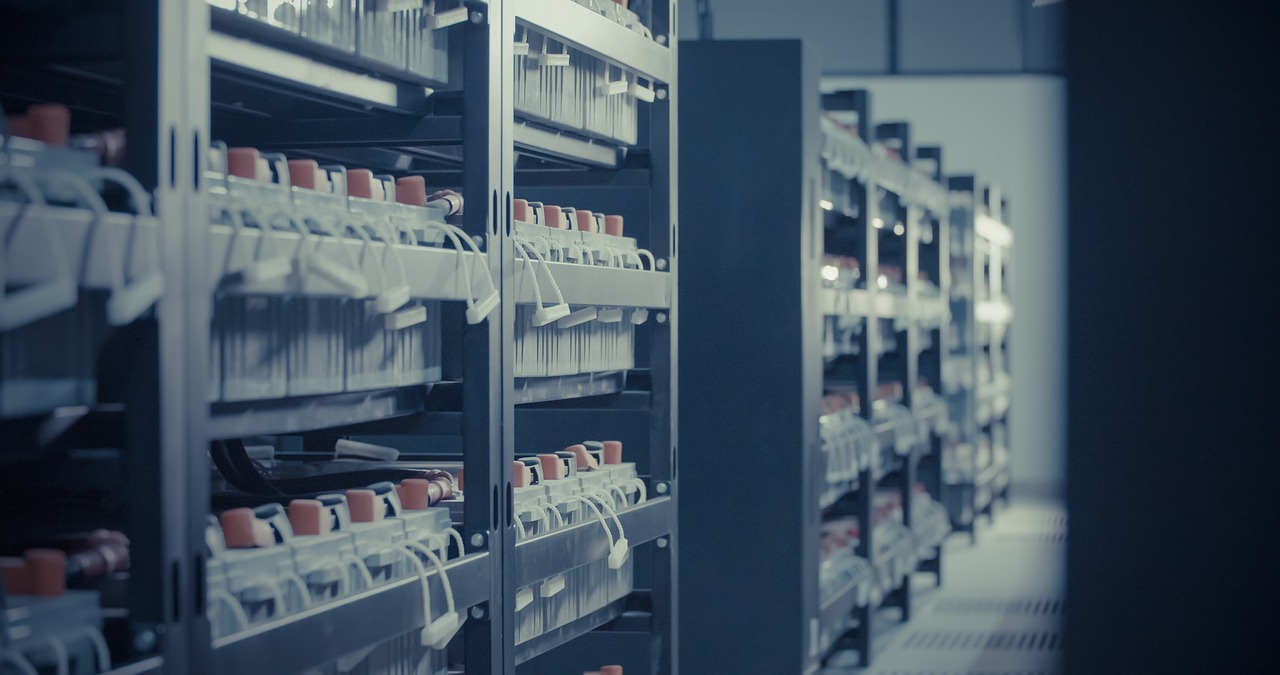
Enhanced User Interaction
In today's fast-paced digital landscape, is not just a luxury; it's a necessity. As organizations increasingly rely on data visualization tools to make informed decisions, the ability for users to interact with data dynamically has become paramount. Imagine walking into a room filled with charts and graphs that come to life, allowing you to explore and manipulate data at your fingertips. This is the essence of interactive data visualization—where users are not mere observers but active participants in the data analysis process.
One of the most exciting aspects of enhanced user interaction is the ability to create personalized insights. Users can tailor their dashboards, selecting the metrics and visuals that matter most to them. This level of customization means that whether you're a marketing analyst tracking campaign performance or a financial officer monitoring budget allocations, you can focus on the data that directly impacts your role. The beauty of this approach lies in its simplicity; it transforms complex datasets into intuitive, user-friendly interfaces.
Moreover, the incorporation of drag-and-drop functionality in many modern data visualization tools has revolutionized how users engage with data. No longer do you need to be a coding wizard to create compelling visualizations. With a few clicks, users can rearrange elements, filter datasets, and even add annotations to highlight key findings. This hands-on approach not only makes data analysis more accessible but also fosters a deeper understanding of the underlying trends and patterns.
Another game-changer is the integration of real-time data updates. Imagine being able to watch your data change as events unfold, whether it's sales figures during a flash sale or social media engagement metrics during a live event. This immediate feedback loop allows users to make quicker, more informed decisions, enhancing their ability to respond to emerging trends. It’s akin to having a live scoreboard during a sports game, where every second counts, and every play can change the outcome.
Furthermore, the use of data storytelling techniques within interactive visualizations helps to bridge the gap between data and decision-making. By guiding users through a narrative, these tools can highlight key insights and trends in a more engaging manner. Think of it as a guided tour through a museum of data, where each exhibit tells a part of the story, making the overall picture clearer and more compelling.
In conclusion, enhanced user interaction in data visualization is about empowering individuals to engage with data on their terms. It transforms the way we interpret information, making it not only more accessible but also more enjoyable. As technology continues to evolve, we can expect even more innovative features that will further enhance user interaction and drive data-driven decision-making across various industries.
- What is enhanced user interaction in data visualization?
Enhanced user interaction refers to the ability of users to engage dynamically with data visualizations, allowing for customization, real-time updates, and personalized insights. - How does real-time data update improve decision-making?
Real-time data updates provide immediate feedback, enabling users to respond quickly to changes and make informed decisions based on the latest information. - Can non-technical users benefit from interactive data visualization tools?
Absolutely! Many modern tools feature user-friendly interfaces and drag-and-drop functionality that make it easy for anyone, regardless of technical skills, to create and analyze data visualizations.

Cloud-Based Visualization Solutions
In today's fast-paced digital landscape, are becoming increasingly essential for businesses aiming to harness the power of their data. These innovative tools not only offer enhanced flexibility but also provide unparalleled scalability, allowing organizations to access and analyze vast amounts of data in real-time from virtually anywhere. Imagine being able to visualize your data on a beach in Bali or during a meeting in New York—this is the freedom that cloud technology brings to the table. With the right cloud-based tools, you can transform complex datasets into clear, actionable insights without being tethered to a physical location.
One of the most significant advantages of cloud-based visualization solutions is their ability to support collaborative work environments. Teams can work together seamlessly, regardless of their geographical locations. For instance, multiple users can interact with the same visualization simultaneously, making it easier to share insights and brainstorm ideas. This level of collaboration not only streamlines project workflows but also fosters a culture of innovation within organizations. It’s like having a virtual conference room where everyone can contribute their thoughts in real time, leading to richer discussions and better decision-making.
However, as organizations increasingly rely on cloud-based systems, data security becomes a paramount concern. Ensuring that sensitive information remains protected while still allowing easy access for authorized users is crucial. Many cloud visualization platforms implement robust security measures, including encryption, user authentication, and regular security audits. This means that while you can enjoy the benefits of cloud technology, you can also rest assured that your data is safe from prying eyes. In fact, many of these platforms comply with industry standards and regulations, further enhancing their reliability.
To illustrate the impact of cloud-based visualization solutions, consider the following table that outlines key features and benefits:
| Feature | Benefit |
|---|---|
| Real-Time Data Access | Immediate insights for quick decision-making |
| Collaboration Tools | Enhanced teamwork and idea-sharing |
| Scalability | Adaptable to growing data needs without significant investment |
| Data Security | Protection of sensitive information with advanced security measures |
In conclusion, cloud-based visualization solutions are not just a trend; they are a revolution in how organizations interpret and utilize their data. By enabling real-time access, fostering collaboration, and ensuring data security, these tools empower businesses to make informed decisions faster and more efficiently than ever before. So, whether you're a startup or an established enterprise, embracing cloud technology could be the key to unlocking your data's full potential.
- What are cloud-based visualization solutions?
Cloud-based visualization solutions are tools that allow users to analyze and visualize data through the internet, enabling real-time access and collaboration from any location.
- How do these solutions enhance collaboration?
These solutions enable multiple users to work on visualizations simultaneously, facilitating idea-sharing and teamwork, regardless of physical location.
- What security measures are in place for cloud-based solutions?
Most cloud-based visualization tools implement encryption, user authentication, and regular security audits to protect sensitive data.

Collaboration Features
In today's fast-paced business environment, the ability to collaborate effectively is more crucial than ever. Cloud-based data visualization tools are at the forefront of enhancing teamwork and collaboration. These platforms allow multiple users to work on visualizations simultaneously, breaking down the silos that often hinder productivity. Imagine a scenario where a marketing team is analyzing customer data for a new campaign. With collaborative features, team members can contribute their insights in real-time, adjusting visualizations based on feedback and new information. This dynamic interaction not only speeds up the decision-making process but also fosters a culture of inclusivity and innovation.
One of the standout aspects of these collaboration features is the ability to leave comments and notes directly on the visualizations. This means that instead of sending countless emails or having lengthy meetings, team members can communicate their thoughts right where the data is being analyzed. It’s like having a conversation happening in the same room where the data is displayed, making it easier to track discussions and decisions. Real-time updates ensure that everyone is on the same page, minimizing the risk of miscommunication.
Furthermore, many of these tools come equipped with version control systems, allowing teams to track changes over time. This is particularly beneficial when multiple users are involved in creating complex visualizations. If a team member makes a change that doesn’t quite sit well with others, the previous version can easily be restored, ensuring that the best ideas are always front and center. Transparency in collaboration not only builds trust among team members but also enhances the overall quality of the work produced.
To illustrate the impact of collaboration features, consider the following table showcasing key benefits:
| Benefit | Description |
|---|---|
| Real-Time Collaboration | Multiple users can edit and analyze data simultaneously, leading to faster insights. |
| Commenting and Feedback | Users can leave comments directly on visualizations, streamlining communication. |
| Version Control | Track changes and revert to previous versions if necessary, ensuring quality control. |
| Accessibility | Access data from anywhere, enabling remote teams to collaborate effectively. |
In summary, the collaboration features in cloud-based data visualization tools are not just add-ons; they are essential components that drive efficiency and innovation. By enabling teams to work together seamlessly, these tools help businesses leverage their data more effectively, turning insights into action. The future of data visualization is not just about individual analysis but about collective intelligence, where every voice matters and every insight counts.
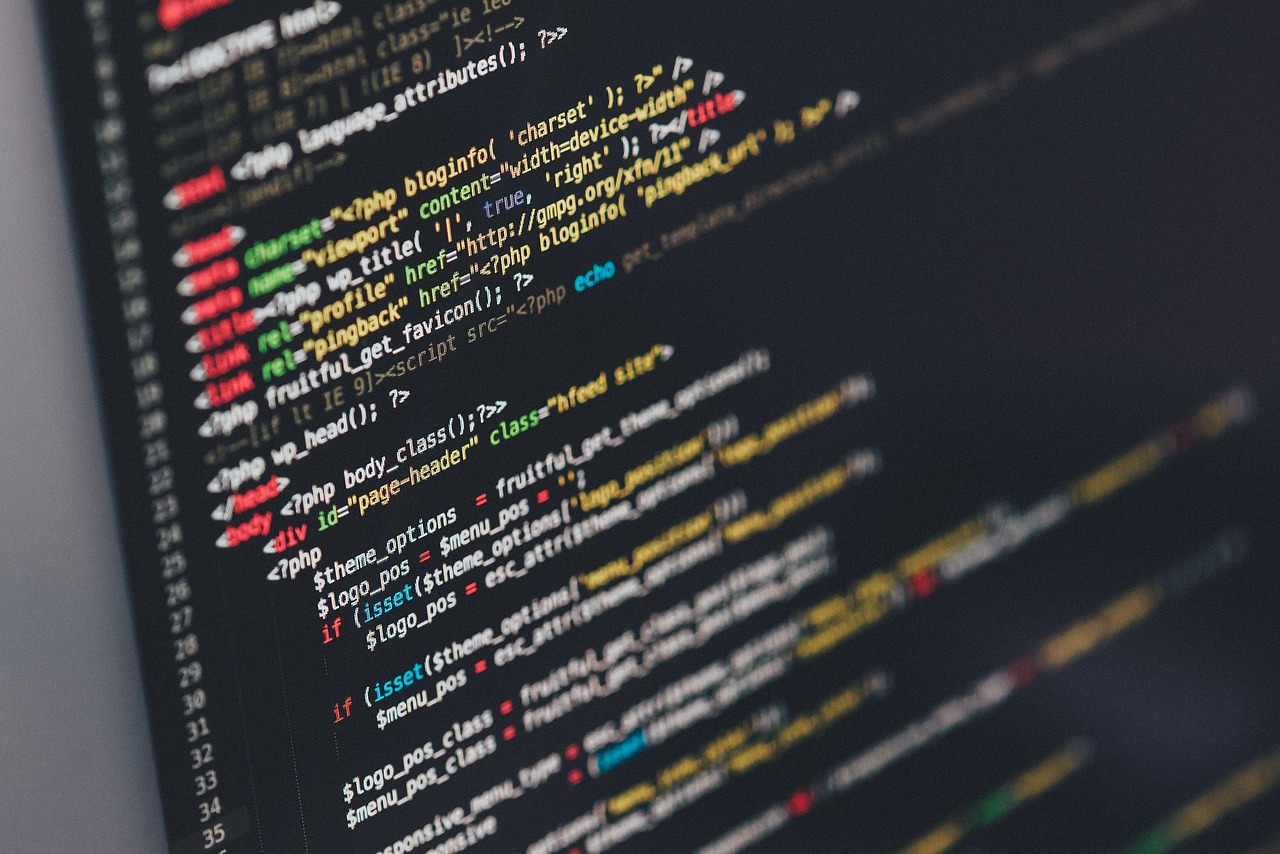
Data Security Measures
In today's digital landscape, where data breaches and cyber threats are rampant, in cloud-based visualization solutions have become more crucial than ever. Organizations are increasingly relying on these tools to analyze sensitive information, making it imperative to implement robust security protocols that protect this data while ensuring easy access for authorized users. Think of it like a high-tech vault; you want to keep your treasures safe, but you also want to be able to access them quickly when needed.
One of the primary security measures is encryption. This involves converting data into a coded format that can only be read by someone with the correct decryption key. This way, even if hackers manage to intercept the data, they will find nothing but gibberish. Additionally, many cloud services employ multi-factor authentication (MFA), adding an extra layer of security by requiring users to provide two or more verification factors to gain access. This could include something they know (like a password) and something they have (like a smartphone app that generates a time-sensitive code).
Another important aspect of data security is regular audits and compliance checks. Organizations must ensure that their cloud providers adhere to industry standards and regulations, such as GDPR or HIPAA, depending on their sector. These audits help to identify any potential vulnerabilities and ensure that appropriate measures are in place to mitigate risks. Furthermore, many cloud services offer detailed activity logs that allow organizations to monitor who accessed what data and when, providing an additional layer of accountability.
To illustrate the importance of these measures, consider the following table which outlines common data security practices in cloud-based visualization solutions:
| Security Measure | Description |
|---|---|
| Encryption | Transforms data into a coded format to prevent unauthorized access. |
| Multi-Factor Authentication | Requires multiple forms of verification to access data. |
| Regular Audits | Ensures compliance with industry standards and identifies vulnerabilities. |
| Activity Logs | Tracks data access and user activity for accountability. |
In addition to these measures, organizations should also invest in employee training. Often, human error is the weakest link in data security. By educating staff on best practices, such as recognizing phishing attempts and using strong passwords, organizations can significantly reduce the risk of data breaches. After all, even the most secure systems can be compromised if users are not vigilant.
In conclusion, as the reliance on cloud-based visualization solutions grows, so does the need for stringent data security measures. Organizations must stay proactive in implementing these practices to safeguard their sensitive information while still enjoying the benefits of real-time data access and collaboration. It's a balancing act, but with the right strategies in place, businesses can thrive in a secure environment.
- What are the most common data security measures? The most common measures include encryption, multi-factor authentication, regular audits, and activity logs.
- How can employee training help with data security? Employee training can reduce human error, which is often a significant factor in data breaches, by educating staff on recognizing threats and using secure practices.
- Why is encryption important? Encryption protects sensitive data by making it unreadable to anyone who does not have the decryption key, thus safeguarding it from unauthorized access.

Augmented and Virtual Reality in Visualization
In today's fast-paced world, the demand for innovative ways to interpret complex data is at an all-time high. Enter Augmented Reality (AR) and Virtual Reality (VR) technologies, which are not just buzzwords but powerful tools that are revolutionizing how we visualize and interact with data. Imagine stepping into a virtual environment where data is not just displayed on a screen but surrounds you, allowing for a deeper understanding of the information at hand. This immersive approach transforms mundane data analysis into a captivating experience, making it easier to glean insights that might otherwise go unnoticed.
AR and VR create immersive data experiences that leverage three-dimensional representations of data. This allows users to manipulate and explore data from various angles and perspectives. For instance, in a healthcare setting, a doctor could use VR to visualize patient data in a 3D model of the human body. This not only enhances understanding but also aids in decision-making processes. By visualizing patient conditions in real-time, healthcare professionals can make more informed choices, ultimately improving patient outcomes.
One of the most exciting aspects of AR and VR in data visualization is their ability to cater to multiple industries. From finance to education, the applications are vast and varied. In finance, for example, traders can use AR to overlay real-time market data onto their physical environment, allowing them to make swift decisions based on current trends. In education, students can engage with complex scientific data through interactive VR experiences, making learning both fun and effective.
Moreover, the integration of these technologies into data visualization tools provides a unique opportunity for collaboration. Teams can gather in a virtual space, regardless of their physical locations, to analyze data together. This means that insights can be shared and discussed in real-time, fostering a collaborative environment that enhances creativity and innovation. The ability to visualize data collectively in an immersive setting can lead to breakthroughs that traditional methods might not achieve.
However, it's essential to consider the challenges that come with implementing AR and VR technologies. These include the high costs of development and the need for specialized hardware. Organizations must also ensure that their teams are adequately trained to use these new tools effectively. Despite these challenges, the potential benefits far outweigh the drawbacks, paving the way for a future where data visualization is not just informative but also engaging and interactive.
| Industry | AR/VR Application | Benefits |
|---|---|---|
| Healthcare | 3D visualization of patient data | Improved diagnostics and treatment planning |
| Finance | Overlay of market trends | Enhanced decision-making speed |
| Education | Interactive learning experiences | Increased engagement and retention |
In conclusion, AR and VR technologies are not just the future of data visualization; they are the present. By creating immersive data experiences that enhance understanding and engagement, they are changing the way we interpret data across various industries. As these technologies continue to evolve, we can expect even more innovative applications that will further transform the landscape of data visualization.
- What is the difference between Augmented Reality and Virtual Reality?
AR overlays digital information onto the real world, while VR creates an entirely immersive digital environment. - How can AR and VR improve data visualization?
These technologies provide immersive experiences that allow users to interact with data in three dimensions, making it easier to identify patterns and insights. - What industries are benefiting from AR and VR in data visualization?
Industries such as healthcare, finance, and education are leveraging these technologies to enhance data analysis and decision-making processes.

Immersive Data Experiences
In today's fast-paced world, the ability to interpret and act on data quickly is more crucial than ever. Enter , a game-changing approach that utilizes augmented reality (AR) and virtual reality (VR) to transform how we interact with data. Imagine stepping into a 3D environment where data is not just displayed on a screen but surrounds you, allowing for a more intuitive understanding of complex datasets. This innovative method is revolutionizing data analysis, making it not only more engaging but also significantly more effective.
With immersive data experiences, users can explore vast amounts of information in a way that feels natural and interactive. For instance, instead of sifting through rows and columns of a spreadsheet, a user can don a VR headset and find themselves inside a virtual landscape where data points are represented as interactive objects. This approach allows for a deeper exploration of relationships and trends that might be missed through traditional methods. By visualizing data in three dimensions, users can identify patterns and correlations that are often obscured in 2D formats.
Moreover, the benefits of immersive data experiences extend beyond mere visualization. They foster collaboration among team members, as multiple users can navigate the same virtual space simultaneously. This collaborative aspect is particularly beneficial for industries like healthcare and finance, where professionals can work together to analyze data in real time, discussing insights and making decisions on the fly. Imagine a team of doctors examining patient data in a shared virtual environment, where they can visualize treatment outcomes and patient histories in a way that enhances understanding and communication.
However, it's essential to consider the technical aspects and challenges associated with implementing these immersive technologies. Organizations must invest in the right hardware and software to ensure a seamless experience. Additionally, training staff to navigate and utilize these tools effectively is crucial. The learning curve can be steep, but the payoff is substantial. As more companies embrace these immersive technologies, they will likely find themselves at a significant advantage over competitors still relying on traditional data visualization methods.
In summary, immersive data experiences are not just a fleeting trend; they represent the future of data visualization. By combining AR and VR technologies, organizations can create engaging, interactive environments that enhance data interpretation and foster collaborative analysis. As we continue to explore the potential of these tools, the possibilities for innovation in data visualization are virtually limitless.
- What are immersive data experiences? Immersive data experiences use AR and VR technologies to create interactive environments for data visualization, allowing users to engage with data in three dimensions.
- How do immersive data experiences benefit organizations? They enhance understanding of complex data, foster collaboration among team members, and allow for quicker and more informed decision-making.
- What industries can benefit from immersive data experiences? Industries such as healthcare, finance, education, and marketing can significantly benefit from these technologies.
- What challenges come with implementing immersive data experiences? Organizations need to invest in the right technology and provide training for staff to ensure effective use of these tools.

Applications in Various Industries
Data visualization technologies are not just a trend; they are becoming essential tools across a wide range of industries. From healthcare to finance, organizations are harnessing the power of visual data representation to enhance their operations and decision-making processes. Imagine being able to see complex data in a way that makes it instantly understandable; this is the magic of data visualization.
In the healthcare sector, for example, data visualization tools are revolutionizing patient care. Doctors and healthcare professionals can utilize interactive dashboards to monitor patient vitals in real-time, track treatment outcomes, and identify trends in patient health. This immediate access to visualized data enables quicker interventions, ultimately improving patient outcomes. A recent study showed that hospitals using advanced data visualization techniques reduced patient readmission rates by over 20%. Isn't that a compelling reason to embrace these technologies?
Moving on to the finance industry, data visualization plays a crucial role in risk assessment and management. Financial analysts use sophisticated visual tools to represent market trends, investment risks, and portfolio performance. By visualizing data, they can quickly identify anomalies and make informed decisions about investments. For instance, a financial dashboard might display stock performance in real-time, allowing analysts to react swiftly to market changes. This capability not only aids in risk management but also enhances overall financial strategy.
In the retail sector, businesses are leveraging data visualization to improve customer experience and optimize inventory management. Retailers can analyze consumer behavior through visualized sales data, identifying patterns that inform marketing strategies and product placements. For example, heat maps can show which areas of a store attract the most foot traffic, guiding retailers in optimizing their store layouts. Furthermore, visual analytics can help predict demand for certain products, ensuring that stock levels meet customer needs without overstocking. This dynamic approach leads to increased sales and higher customer satisfaction.
Moreover, in the manufacturing industry, data visualization is being utilized to streamline operations and enhance productivity. Manufacturers can visualize production data in real-time, monitoring machinery performance and identifying bottlenecks in the production line. This proactive approach allows for timely maintenance and adjustments, leading to increased efficiency. A study found that manufacturers using data visualization tools improved their operational efficiency by up to 30%, showcasing the significant impact of these technologies.
Lastly, the education sector is also embracing data visualization to enhance learning experiences. Educators can use visual data to track student performance and engagement levels, tailoring their teaching strategies accordingly. Visual aids, such as infographics and interactive charts, can make complex subjects more accessible, helping students grasp challenging concepts. This not only improves educational outcomes but also fosters a more engaging learning environment.
In summary, the applications of data visualization span across various industries, each reaping unique benefits. Whether it's enhancing patient care in healthcare, optimizing investments in finance, improving customer experiences in retail, boosting productivity in manufacturing, or enriching learning in education, the impact is profound. As these technologies continue to evolve, we can expect even more innovative applications that will further transform how industries operate.
- What is data visualization? Data visualization is the representation of data in graphical formats, making it easier to understand and analyze complex information.
- How does data visualization benefit businesses? It allows businesses to make informed decisions quickly by presenting data in a more digestible and engaging manner.
- Which industries benefit the most from data visualization? Healthcare, finance, retail, manufacturing, and education are among the top industries leveraging data visualization technologies.
- Are there specific tools for data visualization? Yes, there are numerous tools available, such as Tableau, Power BI, and Google Data Studio, each offering unique features for data representation.
Frequently Asked Questions
- What is real-time data visualization?
Real-time data visualization refers to tools and technologies that allow organizations to monitor and analyze data as it is generated, providing immediate insights and enabling quicker responses to emerging trends. This capability is crucial for businesses that need to make timely decisions based on current data.
- How do AI and machine learning enhance data visualization?
AI and machine learning enhance data visualization by automating the process of data analysis and providing predictive analytics. These technologies can identify patterns and trends in large datasets, allowing users to focus on interpreting results rather than getting bogged down by data collection.
- What are automated data insights?
Automated data insights streamline the analysis process by using algorithms to generate insights without manual intervention. This means that users can quickly access important information and focus on making decisions based on these insights rather than spending time on data gathering.
- How does natural language processing (NLP) improve data visualization?
NLP improves data visualization by allowing users to interact with data using everyday language. This makes it easier for non-technical users to query complex datasets and gain insights without needing advanced technical skills.
- What is predictive analytics visualization?
Predictive analytics visualization represents complex data patterns through intuitive graphics and dashboards, helping businesses anticipate future trends. This form of visualization allows for better decision-making by providing a clear view of potential outcomes based on historical data.
- What are the benefits of cloud-based visualization solutions?
Cloud-based visualization solutions offer flexibility and scalability, enabling organizations to access and analyze data from anywhere in real-time. They also facilitate collaboration among team members and ensure that data is securely stored and easily accessible.
- How do collaboration features enhance cloud-based tools?
Collaboration features in cloud-based tools allow multiple users to work on visualizations simultaneously, enhancing teamwork and streamlining project workflows. This real-time collaboration fosters better communication and faster project completion.
- What measures are in place for data security in cloud-based visualization?
Data security measures in cloud-based visualization solutions include encryption, user authentication, and access controls to ensure that sensitive information remains protected while still allowing easy access for authorized users.
- How is augmented and virtual reality used in data visualization?
Augmented and virtual reality technologies are used in data visualization to create immersive experiences that enhance understanding and engagement with complex data sets. These technologies allow users to explore data in three dimensions, making it easier to identify patterns and insights.
- What industries are adopting AR and VR for data visualization?
Various industries, including healthcare, finance, and education, are adopting AR and VR for data visualization. These technologies improve how professionals analyze and present data, leading to better decision-making and enhanced understanding of complex information.

